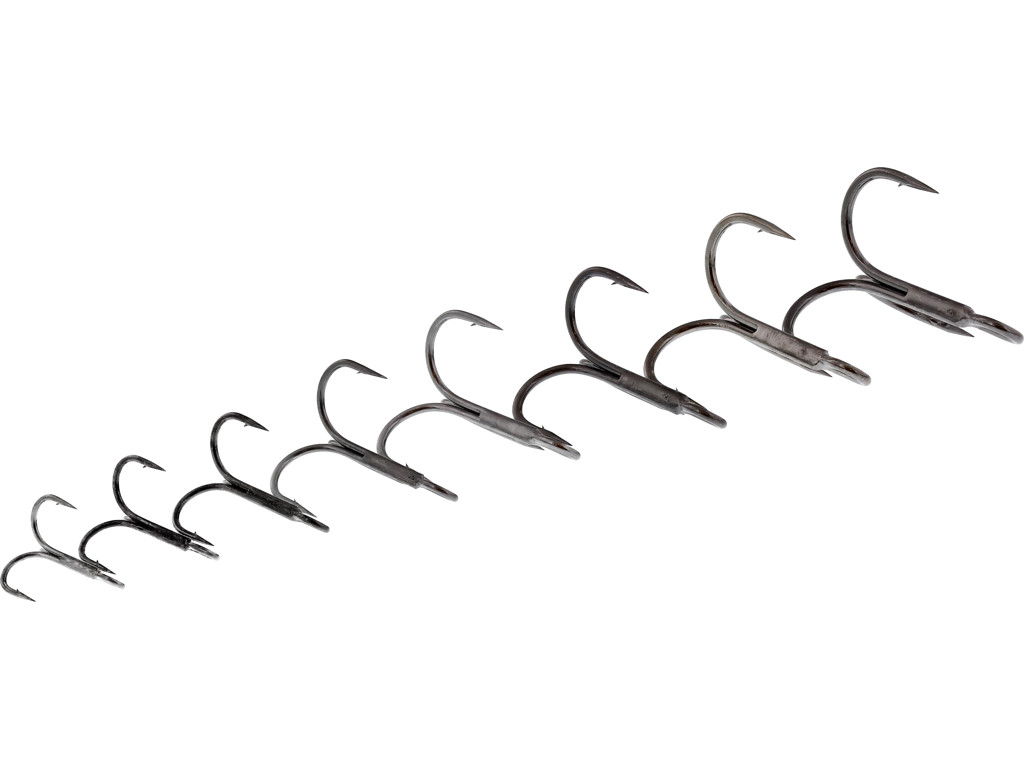Choosing the right size treble hook is essential for every angler, as it can make or break a fishing trip. Treble hooks are versatile and widely used in various fishing techniques, but selecting the appropriate size can be challenging. This guide aims to provide a comprehensive understanding of treble hook sizes, their applications, and how to choose the right one for different fishing situations.
Understanding Treble Hook Sizes
Treble hooks come in a wide range of sizes, from very small (size 20) to very large (size 1/0, 2/0, etc.). The size of the treble hook is inversely related to its number—meaning, the larger the number, the smaller the hook. For example, a size 6 treble hook is smaller than a size 2, and a 1/0 is larger than both.
The choice of treble hook size depends on several factors, including the type of fish being targeted, the size of the lure, and the fishing conditions. Here’s a breakdown of how to select the right size:
- Small Treble Hooks (Sizes 8-12): These are ideal for targeting smaller fish species such as trout, panfish, and crappie. They are also commonly used for fishing with smaller lures and baits like spinners and tiny crankbaits.
- Medium Treble Hooks (Sizes 4-6): These sizes are versatile and can be used for a variety of species, including bass, walleye, and small pike. They work well with medium-sized lures, such as larger crankbaits and jerkbaits.
- Large Treble Hooks (Sizes 1-2): Larger hooks are suitable for targeting bigger fish like musky, large pike, and saltwater species. They pair well with large lures such as topwater baits, big swimbaits, and large crankbaits.
- Extra-Large Treble Hooks (Sizes 1/0 and above): These hooks are designed for the biggest and most powerful fish, including trophy muskies, giant catfish, and big game saltwater species. They are typically used on very large lures and live baits.

Factors to Consider When Choosing Treble Hook Size
- Target Species: The size of the fish being targeted is the most critical factor in determining hook size. Larger fish require stronger and larger hooks, while smaller species require finer, smaller hooks to avoid spooking them.
- Lure Size and Type: The size and type of lure also play a crucial role. For example, crankbaits, swimbaits, and topwater lures have built-in treble hooks, and replacing them with the right size ensures the lure maintains its intended action. When upgrading or changing hooks, match the new hook’s size to the original to maintain the lure’s balance and action.
- Fishing Environment: The environment and fishing conditions also affect hook choice. In heavy cover or weedy areas, larger hooks can help pull fish out of cover, while in open water, smaller hooks may suffice. Additionally, in clear water, smaller hooks can be less visible to fish and improve bite rates.
- Hook Strength and Gauge: When targeting larger or stronger species, the gauge (thickness) of the hook is crucial. Thicker hooks offer more strength and durability, preventing bending or breaking during a fight.
Practical Tips for Selecting Treble Hooks
- Check Hook Point Sharpness: Ensure that the hook points are sharp, as dull hooks reduce the likelihood of successful hooksets. Sharp hooks penetrate fish mouths more easily, improving catch rates.
- Test Different Sizes: Experiment with different hook sizes to see what works best for specific lures and fishing conditions. Having a variety of sizes on hand allows for quick adjustments on the water.
- Consider the Hook’s Brand: Not all hooks are created equal. Some brands offer specialized hooks with unique features like extra-wide gaps, corrosion resistance, or reinforced shanks. Choose reputable brands known for quality and reliability.
- Use Treble Hook Covers: When storing lures with treble hooks, use hook covers to prevent them from tangling with other gear. This also helps to maintain the sharpness and condition of the hooks.
- Replace Rusted or Damaged Hooks: Over time, hooks can become damaged or rusted, especially in saltwater environments. Regularly inspect and replace treble hooks to ensure they are in optimal condition.
Choosing the right size treble hook is crucial for successful fishing. By considering factors such as target species, lure size, and fishing conditions, anglers can make informed decisions that enhance their chances of landing fish. Whether targeting small trout or large pike, having the right treble hook size in the tackle box is essential for any angler.
Image: Westin





